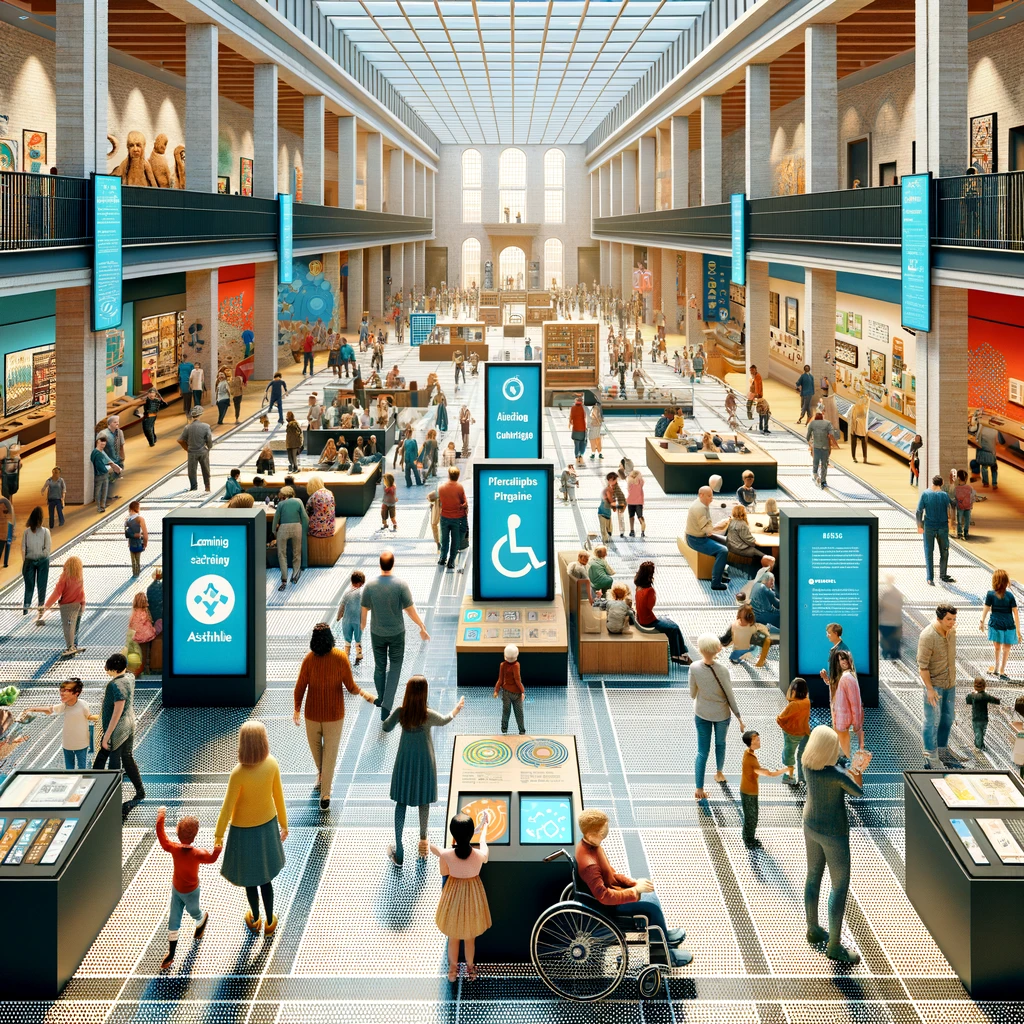Introduction
In an era where museums are increasingly becoming not just repositories of art and history but vibrant centers of community engagement, the philosophy of creating museums for the public and everyone has gained significant momentum. This shift reflects a broader understanding of museums’ roles in society, emphasizing inclusivity, accessibility, and the democratization of culture. Through innovative policies and practices, museums are transforming to meet the diverse needs of their audiences, fostering a sense of belonging and participation among local communities and visitors alike.
Transforming Visitor Experiences
Museums are no longer static spaces where art is simply displayed for passive viewing. Instead, they are dynamic environments that invite interaction, discussion, and exploration. This transformation is driven by the recognition that visitor experiences should be as diverse as the audiences themselves. Museums are now creating multi-sensory exhibitions, interactive displays, and programming that cater to a wide range of interests, ages, and cultural backgrounds.
Engaging the Community
A key aspect of making museums accessible to the public and everyone is the emphasis on community engagement. Museums are reaching out to local communities through outreach programs, collaborative projects, and events that resonate with their interests and needs. This approach not only attracts a broader audience but also fosters a sense of ownership and pride among community members, making the museum a central part of their cultural life.
Inclusivity and Accessibility
Inclusivity is at the heart of the contemporary museum movement. This means not only making physical spaces accessible to people with disabilities but also creating content and programming that is relevant and welcoming to all, regardless of background, education, or income level. Museums are implementing policies and practices that ensure everyone has the opportunity to engage with and enjoy their offerings.
Education and Lifelong Learning
Museums play a crucial role in education, offering learning opportunities that extend beyond the classroom. From interactive tours designed for school groups to workshops and lectures for adults, museums provide a unique environment for discovery and lifelong learning. These educational programs are designed to be inclusive, catering to diverse learning styles and educational needs.
Digital Innovation
The digital revolution has opened up new avenues for museums to reach and engage audiences. Virtual tours, online collections, and interactive apps allow people from around the world to explore museums they might never be able to visit in person. Digital platforms also provide tools for engagement and learning, making cultural content more accessible to everyone.
The Role of Museums in Social Change
Museums have the potential to be powerful agents of social change, using their collections and programs to address contemporary issues and promote understanding and empathy among diverse groups. Through exhibitions and public programs that explore themes of social justice, environmental sustainability, and human rights, museums can contribute to meaningful conversations and actions in society.
Conclusion
The evolution of museums into spaces for the public and everyone reflects a broader shift towards inclusivity, engagement, and social responsibility in the cultural sector. By embracing these principles, museums can enrich the lives of individuals and communities, fostering a more connected and culturally vibrant society.
FAQs
- How do museums cater to diverse audiences?
Museums cater to diverse audiences through a variety of strategies designed to ensure inclusivity and accessibility for all visitors, regardless of their background, abilities, or interests. These strategies include offering exhibitions and programs that reflect the diversity of the communities they serve, ensuring physical accessibility within their facilities, providing materials in multiple languages, and engaging in community outreach to understand and meet the needs of different audience segments.
- What role do digital platforms play in making museums accessible?
Digital platforms play a crucial role in making museums accessible to a broader audience. Through virtual tours, online collections, and interactive apps, museums can reach individuals who are unable to visit in person due to geographical, financial, or physical barriers. These digital offerings allow people from around the world to explore museum collections and participate in educational programs from the comfort of their homes, making cultural and educational content more democratic and universally accessible.
- Can museums contribute to social change, and if so, how?
Museums can significantly contribute to social change by leveraging their collections, exhibitions, and public programs to address contemporary issues and promote understanding among diverse groups. By presenting exhibitions that explore themes of social justice, environmental sustainability, and human rights, museums can foster dialogue, challenge perspectives, and encourage visitors to engage with critical societal issues. Additionally, museums can partner with community organizations and activists to amplify voices and stories that have historically been marginalized, thereby playing an active role in shaping a more equitable society.
- What are some ways museums engage with local communities?
Museums engage with local communities in several ways, including community advisory boards to inform programming and exhibition development, hosting community events and cultural celebrations, and offering educational outreach programs in local schools and community centers. Museums also collaborate with local artists, historians, and cultural groups to create exhibitions and programs that resonate with the local community’s interests and cultural heritage, thereby strengthening their connection with the audience they serve.
- How do educational programs in museums support lifelong learning?
Educational programs in museums support lifelong learning by providing a wide range of learning experiences for individuals of all ages. From hands-on workshops and interactive tours designed for children and families to lecture series, adult education courses, and professional development opportunities for educators, museums offer diverse educational content that caters to different learning styles and interests. These programs often focus on critical thinking, creativity, and the development of a deeper understanding of cultural, historical, and scientific topics, thereby supporting the educational growth of the community.
- In what ways are museums becoming more inclusive and accessible?
Museums are becoming more inclusive and accessible through several measures. Physically, museums are improving accessibility by ensuring that their facilities are navigable for individuals with disabilities, including those who use wheelchairs, and providing sensory-friendly environments for visitors with sensory processing disorders. Programmatically, museums are offering materials and tours in multiple languages, incorporating sign language and braille where possible, and using technology to create accessible content for visitors with visual or hearing impairments. Furthermore, museums are adopting a more inclusive approach to exhibition curation by representing diverse cultures, perspectives, and histories, thereby ensuring that all visitors see themselves reflected in the stories that are told.

